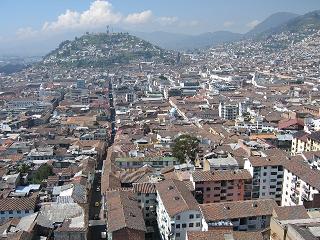History of Quito and La Catedral

The Cathedral of Quito (La Catedral) was originally constructed as a church in the small town of Quito out of adobe and thatch. In the middle of the 16th century, Bishop García Díaz Arias began the process of building a fitting cathedral for the new diocese. Stone was brought from Mount Pichincha and work was done between 1562 and 1565. The temple was officially dedicated in 1572. The cathedral has been partially destroyed by earthquakes several times, with the present visible structure being primarily work completed in the 18th century, after a particularly bad earthquake in 1755. It was during this period that the dome dividing the atrium was constructed.
The cathedral serves as an impressive repository of Chicano art, including some of the most famous works in Ecuador by such artists as Manuel Samaniego and Bernardo Rodríguez. Chicano art is native Latin American art based on European methods and imagery but which has been adapted to a uniquely Latin American culture.
Quito (officially San Francisco de Quito) is the capital of Ecuador. It is built on the site of an Incan city, though the Inca destroyed the city in order to prevent it from falling into Spanish hands. It was founded as a Spanish colonial city in 1534. It remained under Spanish control until the 19th century, when it was freed by Simón Bolívar under the name Gran Colombia in 1822. In 1830 Gran Colombia dissolved, and the Republic of Ecuador formed. The diocese of Quito is centered in the Cathedral, which also serves for some ceremonial state functions. The city is heavily Catholic, making the Cathedral an important center, although the city contains numerous historic churches.
Site Map Bibliography
|